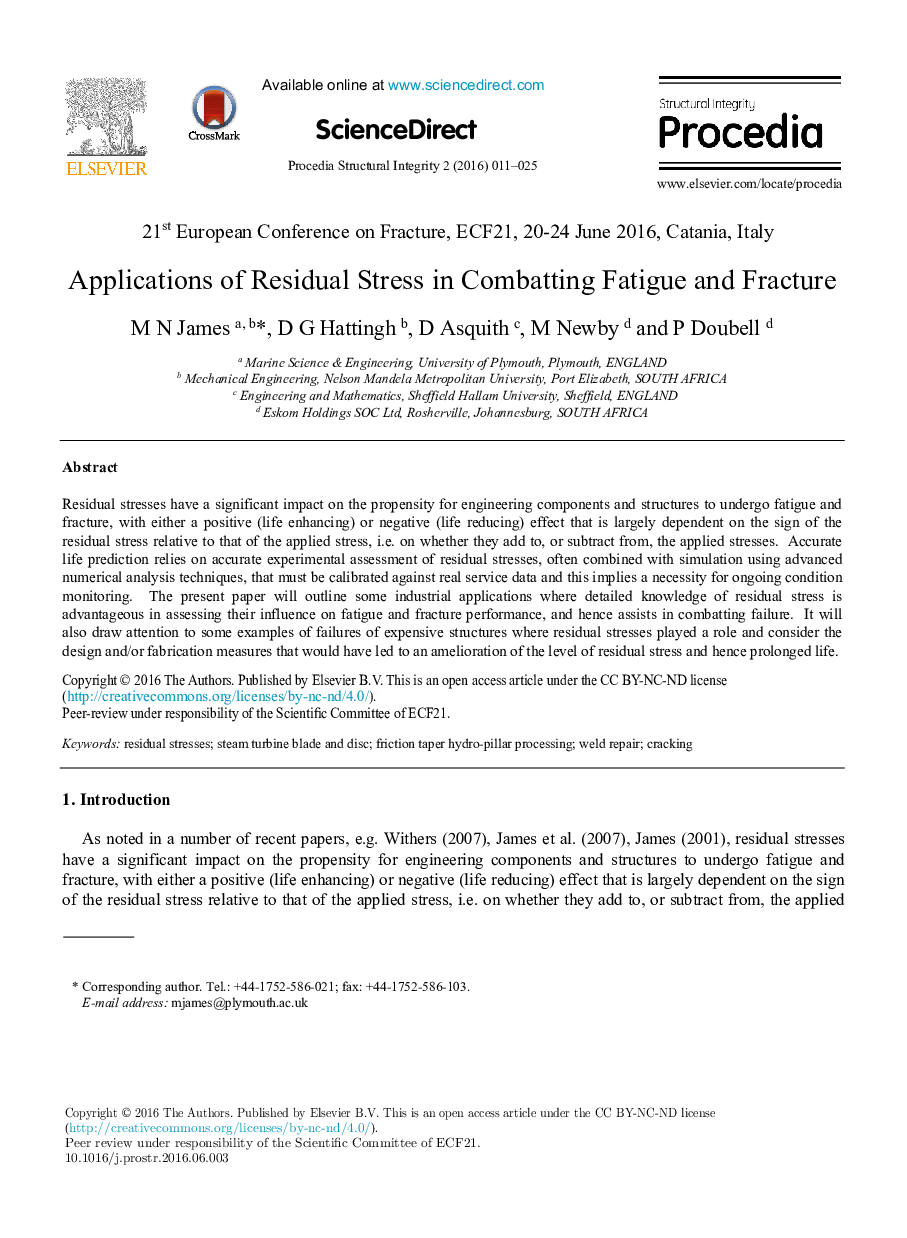| Article ID | Journal | Published Year | Pages | File Type |
|---|---|---|---|---|
| 1558644 | Procedia Structural Integrity | 2016 | 15 Pages |
Abstract
Residual stresses have a significant impact on the propensity for engineering components and structures to undergo fatigue and fracture, with either a positive (life enhancing) or negative (life reducing) effect that is largely dependent on the sign of the residual stress relative to that of the applied stress, i.e. on whether they add to, or subtract from, the applied stresses. Accurate life prediction relies on accurate experimental assessment of residual stresses, often combined with simulation using advanced numerical analysis techniques, that must be calibrated against real service data and this implies a necessity for ongoing condition monitoring. The present paper will outline some industrial applications where detailed knowledge of residual stress is advantageous in assessing their influence on fatigue and fracture performance, and hence assists in combatting failure. It will also draw attention to some examples of failures of expensive structures where residual stresses played a role and consider the design and/or fabrication measures that would have led to an amelioration of the level of residual stress and hence prolonged life.
Keywords
Related Topics
Physical Sciences and Engineering
Materials Science
Materials Chemistry
Authors
M N James, D G Hattingh, D Asquith, M Newby, P Doubell,
